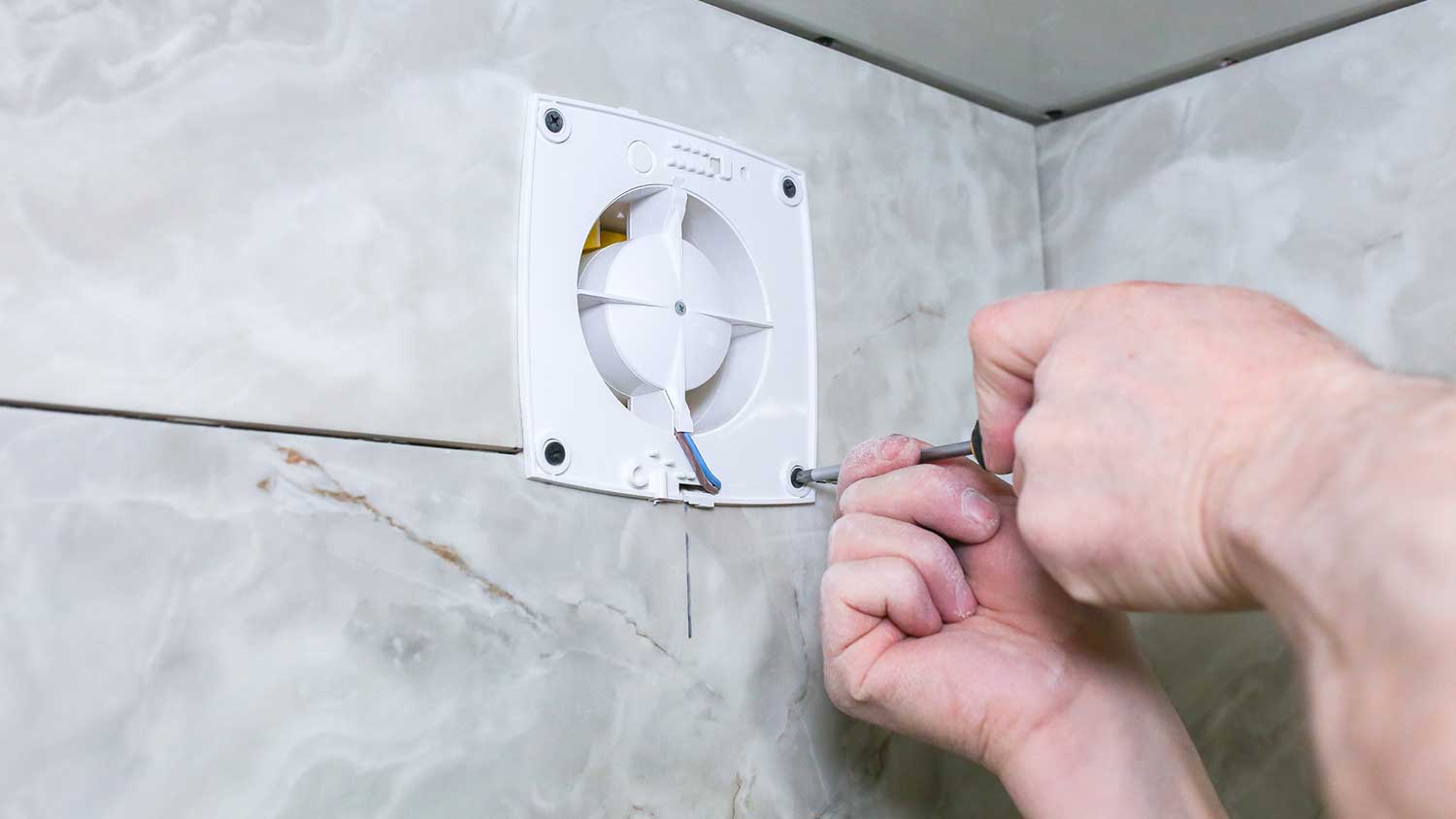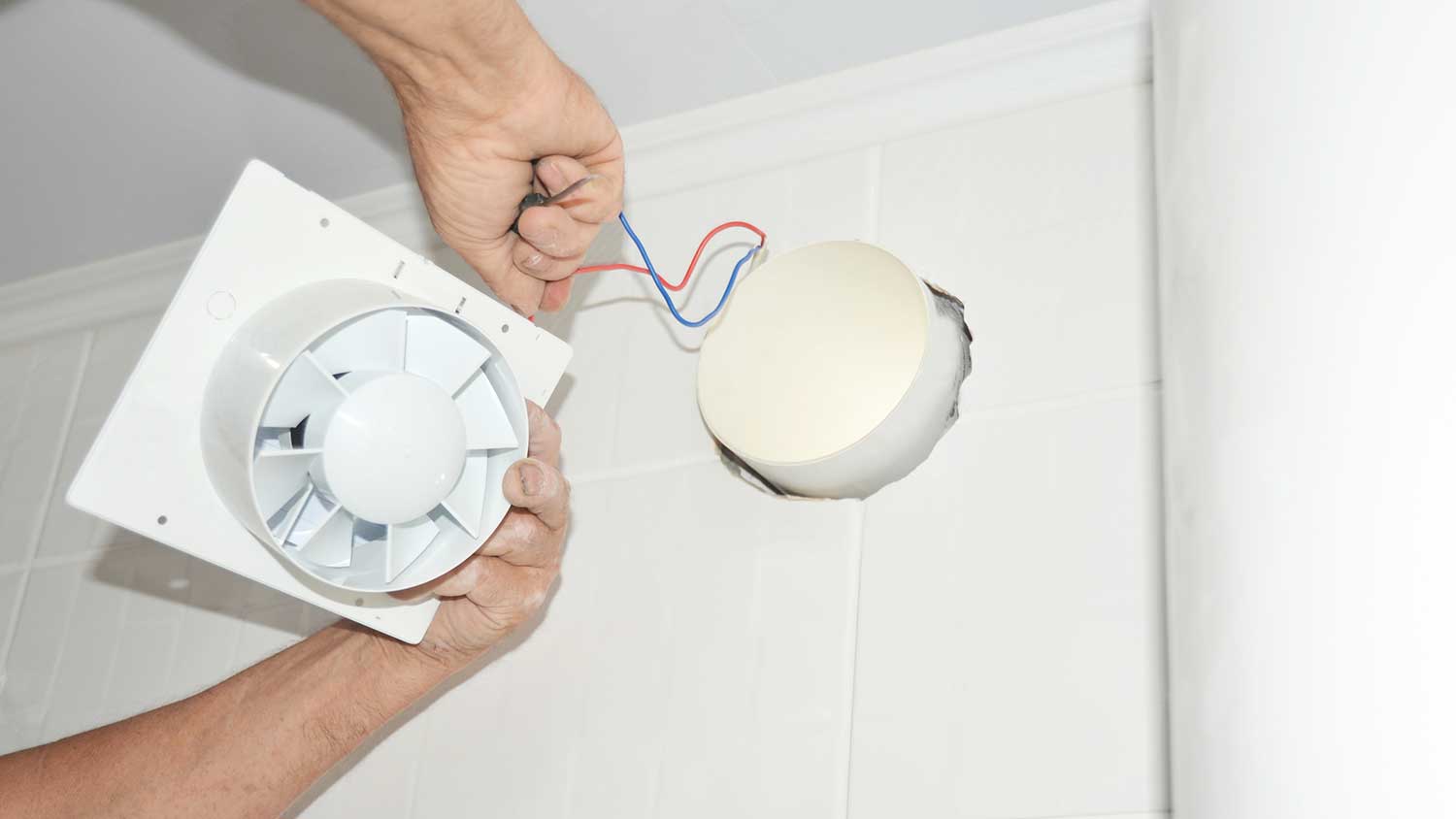Why Is My Bathroom Fan So Loud? 4 Reasons Why
Is your bath fan being exhausting?


Your bath fan repair may be as simple as cleaning it, or it may require replacement.
Inspecting your bath fan for issues is the first step to finding a fix.
Installing a new bath fan costs between $240 and $564.
As a seemingly small device, “Why is my bath fan so loud?” is a more common question than you may think. Often, the problem stems from a need to clean and maintain the fan and its housing. However, bath fans only last about 10 years, and a replacement could be in order if new noises appear.
1. Dirty Bath Fan
The most common reason that your bath fan is being loud is that it's out of balance due to dirty blades, or there's an obstruction that's preventing the fan blades from spinning freely. This condition is normal. As your bath exhaust fan works to remove moisture from the room, it picks up plenty of airborne and damp particles to go with it, and they're notorious for sticking to everything within the fan housing and causing problems.
How to Fix It
Your bath fan requires regular maintenance in the form of cleaning about twice per year. While the process is straightforward, cleaning your bath fan is essential for keeping the motor and fan parts in optimal working order to provide the best and quietest performance.
2. Loose Parts

Your bathroom exhaust fan has just a couple of moving parts. However, when they don't operate as they should, they can make quite a noise. Loose screws, loose motor mounts, and loose ductwork or exhaust flaps can all add to the nuisance. While this is sometimes a result of a lack of maintenance, it's also just a natural function of having moving parts in a small package.
How to Fix It
While you're cleaning your bath fan, take a look around for loose screws, particularly where the motor mounts to the housing. These may take the form of small screws or small nuts and bolts. Tightening them might do the trick and muffle much of the sound coming from the source.
3. Duct Issue
Your bath fan exhaust relies on a short piece of ductwork to vent indoor air to the outdoors. Despite its small size, it can host a range of issues. Water leaking from your exhaust fan is a more common problem than many realize. Where noise is concerned, the short duct is protected by a necessary exhaust flap that keeps outdoor air out while letting indoor air pass through. A windy day can cause a low-pressure scenario in the duct and cause the flap to bounce open and closed with a distinct flapping and bumping sound.
How to Fix It
While some homeowners go for a simple fix of placing an obstruction in the way of the vent flap, doing so allows unwanted outdoor air into the home, which can cause trouble with moisture being trapped in the duct. The best course of action is to discuss the problem with the same company that can replace the fan as a whole if necessary.
4. Motor Problem

Buzzing, clicking, or knocking are all signs that your bath fan motor is closing in on its final days. If your bath fan motor is failing, you may also hear noises that sound like it's changing speeds from time to time.
How to Fix It
Many bath fans have replaceable motors, so you won't have to replace the entire unit. However, if you wish to upgrade to a new system, the cost of installing a bath fan is between $240 and $564.
When to Call a Pro
Regularly cleaning your bath fan is essential for keeping it running quietly and for as long as possible. While the task is straightforward, many homeowners hire a local handyperson for the job because electricity is involved and caution is necessary.
If your bathroom fan noise is from a motor failure, duct issue, or other cause, hiring a nearby HVAC repair technician is the best way to handle the situation.
Frequently Asked Questions
Your bathroom exhaust fan shouldn't be loud. However, bath fans come in a wide variety of models, price points, and loudness characteristics, and yours may be louder or quieter than others you notice. Economy models tend to be the noisiest, with levels of 4.0 sones or more, which is about the sound of an electric shaver, while some high-end models can be barely audible.
WD-40 in its liquid or aerosol form is highly flammable. Using it around live electrical parts, such as a bath fan, can generate fire and a dangerous condition. However, if you follow proper safety procedures, including disconnecting the power to the fan before working on it, WD-40 can help remove some of the grime that builds up in your bath fan.





- Furnace Repair
- Air Conditioning Repair
- HVAC Repairs
- Furnace Installation
- Wood & Pellet Stove Repair
- Dehumidifier & Humidifier Repair
- Heat Pump Companies
- Swamp Cooler Repair
- Wood Stove Services
- HVAC Companies
- Commercial A/C Repair
- Geothermal Installation
- Air Conditioning Installation
- Boiler Repair
- 24 Hour Furnace Repair
- Geothermal Repair
- Heat Pump Repair
- Humidifier Installation
- Thermostat Repair
- Thermostat Installation
- Nest Installation
- Heating & Cooling
- Heating Repair
- Furnace Cleaning
- Furnace Tune-Up
- HVAC Technicians
- Subcontractors
- Furnace Maintenance
- Plumbing & Heating Companies
- Wood Stove Inspection
- Mini Split Installation
- Wall Heater Repair
- Duct Installers










